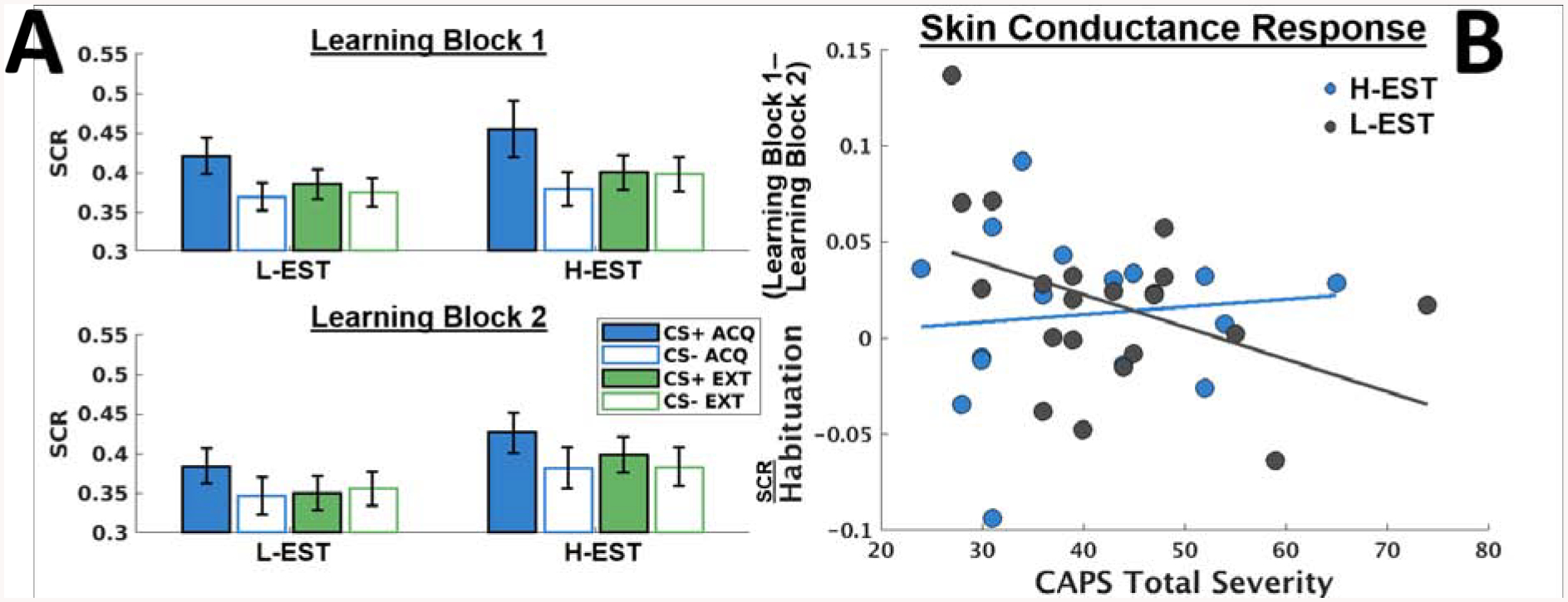Figure 1.

A) Bar graphs indicating skin conductance responses (SCR) throughout two Learning Blocks of a contextual fear conditioning task during fMRI, with each Learning Block consisting of two alternating blocks of fear Acquisition (ACQ) and fear Extinction (EXT) phases, respectively. ACQ and EXT task phases were administered using different background colors indicating distinct contexts. In order to probe direction of interactions, mean skin conductance responses across stimulus type (CS+ versus CS−) are reported separately, distinguishing between low salivary estradiol level (L-EST) versus high salivary estradiol level (H-EST), determined by median split. Error bars denote standard errors. B) Scatterplot depicting relationships between Habituation (difference between SCR throughout Learning Block 1 and Learning Block 2) and PTSD severity (determined with the Clinician-Administered PTSD Scale for DSM-5 [CAPS]), plotted separately for L-EST and H-EST participants. Habituation between Learning Blocks is negatively related to PTSD severity among L-EST participants, t(132)=−3.985, p<.001, but not among H-EST participants, t(136)=0.550, p=0.583.
